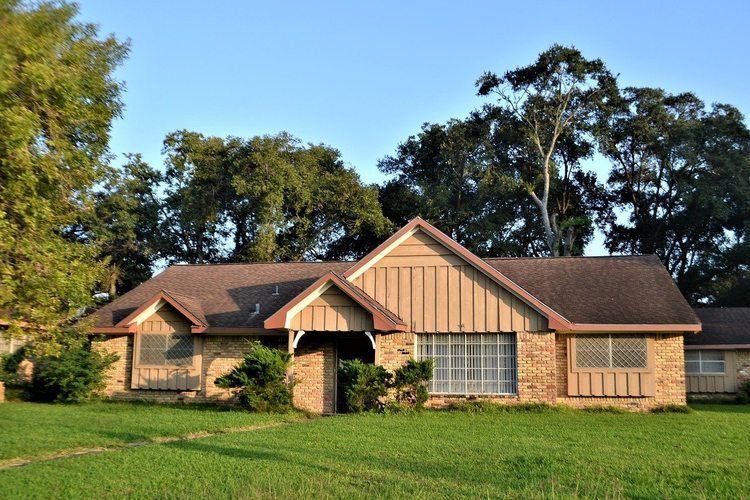What is a home owner insurance?
by Admin | January 14, 2023
Kitchen fire, burst water pipes or storm and snow pressure damage to the roof - the list of possible disasters in the home is long. To protect yourself against this financial risk, homeowners insurance including household insurance helps.
What is insured?
Home owner insurance
While household insurance covers damage to household contents, homeowners insurance covers damage to the building. For owner-occupied homes, it makes sense to combine both insurances. For rented apartments, household insurance is sufficient. For condominiums, you need homeowner's insurance in addition to household insurance, which is usually taken out by the property management company for the owners' association.
Usually, homeowner's insurance combines fire, windstorm, water damage and building liability, but these could also be insured separately.
Shell insurance
Shell insurance is usually offered premium-free as an advance payment for a subsequent homeowners insurance policy. This allows the shell of the building to be insured against perils such as fire, liability for home and property, and - once the building is fully completed and covered all around - storm damage. Some insurers also offer coverage - sometimes at an additional cost - for tap water or glass breakage.
Make sure you have builders' liability insurance. This covers personal injury and property damage that occurs during the construction phase - e.g. to neighbors or passers-by. Ask about the sum insured, which varies greatly from insurance company to insurance company and can be increased in some cases. In some cases, own work is also insured.
The duration of the shell insurance is usually 1 to 2 years, but can be extended in many cases. The insurance company must be notified of move-in or completion, otherwise benefits may be denied in the event of a claim. Upon completion of the house, the initially premium-free shell insurance becomes a homeowner's insurance policy with a term of 3 to 10 years. It is therefore advisable to pay attention to the conditions of the homeowner's policies even before construction begins.
Cover for unforeseeable damage
Construction insurance, which is considered "comprehensive insurance" for the construction of buildings, is also offered. With this, builders, contractors and building tradesmen can insure themselves against unforeseeable damage during construction (e.g. if the excavation pit fills with rainwater due to an exceptionally severe storm or the ceiling collapses due to a material or construction defect).
Determination of the sum insured
- Square meter insurance
Most contracts today are calculated according to the square meter variant. In this case, the insurance company waives the objection of underinsurance in the event of a claim if the square meter information is correct.
- Sum insurance
If you insure your building or household contents with a concretely calculated sum insured instead, make sure that it corresponds to the actual financial expenditure that would arise in the case of new construction of the building or new acquisition of the entire household contents, otherwise there is a risk of a proportionately reduced benefit in the event of a claim (even in the case of partial damage).
What you should pay attention to
Compare offers
The insurance products are similar in the core area, but very different in detail. Therefore, obtain several quotes before signing the contract and make sure you get good advice. Have unfamiliar terms explained to you (such as "insurance applies at first risk") and ask for benefit overviews. These make it easier to compare different products.
Check insurance needs
Check whether your desired insurance needs are sufficiently covered (e.g. outbuildings, swimming pool including cover, whirlpool, solar system including glasses, underfloor or wall heating, photovoltaic system, carport, ground collectors, large glass surfaces, conservatory and roof glazing, artificial glazing, plastic panes, solar and flat collectors, (natural) fencing, greenhouse, pergola, sun awning, playground equipment, scope of coverage of any shell insurance, damage caused by
environmental disturbance (for example by oil tank), dog liability, aquarium, waterbed, increased liability limits for cash, jewelry and other valuables, ceramic, or induction cooktop, expensive bicycles and e-bikes, lawn robot, etc.).
Damage caused by gross negligence
In our opinion, it makes sense to also insure damage caused by gross negligence. If this is not the case and, for example, an apartment fire is caused by gross negligence, you will not be compensated for your damage by the insurance company (the distinction from minor negligence is often difficult).
Many insurance companies cover gross negligence, but sometimes for an additional charge. Pay attention to the agreed amount of the payment to be made by the insurance company. This can be up to 100 percent of the damage, but can also be limited with a maximum damage payment. Comparison is particularly important here.
TIP
Ask about coverage of 100 percent also for damage caused by gross negligence.
Pipe water damage
The extent of pipe replacement within the building varies widely among insurers. This ranges mostly from 6 meters, to 10 meters, to 12 meters, to 15 meters, to unlimited protection.
There are also differences in coverage for damage to supply and drainage pipes outside the building (at the property and outside the property). Some products even provide an exclusion of benefits outside the property.
Catastrophe protection
Catastrophe protection (e.g., flood, inundation, mudflow) is often covered in newer products up to a maximum amount (depending on the insurance, usually between 4,000 euros and a maximum of 10,000 euros for the building and 4,000 euros and a maximum of 10,000 euros additionally for the household contents). Some insurers also offer higher protection for an additional charge. Furthermore, the risk zone (keyword HORA) in which the home is located is often important - the greater the risk, the higher the premium or this risk is not insurable at all - there are great differences here.
Replacement value
Make sure that your contract provides for a general replacement value replacement, so that you also receive the replacement value and not only the current market value for older items. The contract should not include a clause that says only the current value will then be replaced if the current value of the insured item in the event of a loss is less than 40 percent of the new value. Floor and basement stuff is often only replaced at current value.




